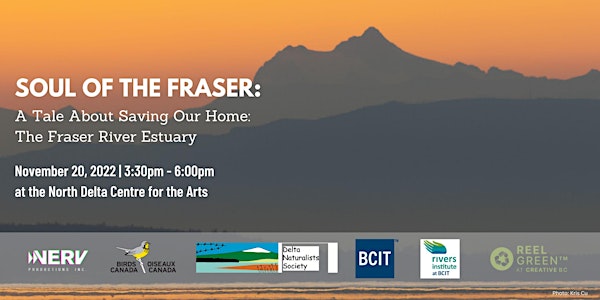Roger Emsley and Robin Silvester will likely never be chums. Their respective passions run in opposite directions over the most controversial (and expensive) project ever proposed for Canada’s Pacific Gateway. Mr. Emsley is as ardently opposed to the Port of Vancouver’s proposed Roberts Bank Terminal 2 (RBT2) as Mr. Silvester is committed to its construction.
Mr. Emsley, a transportation industry consultant with a lengthy career as systems analyst, has led a broad coalition of grass-roots organizations aligned under the banner ‘Against Port Expansion’ while meticulously following the details of a federal Environmental Assessment Panel’s process for the last nine years. Mr. Silvester, President and CEO of the Port of Vancouver, with a background in marine mergers and acquisitions, insists the $3.5 billion RBT2 project is the only viable alternative to meet Asian container trade volumes on Canada’s west coast by 2030.
Both now anxiously await a decision from the federal Environment Minister who received the Panel’s Report in 2019. However, in a further delay, the federal government made a post-report request last year for more information from the Port, submitted in June this year, and over which Mr. Emsley has called foul. The primary issue is the scientific credibility of the Port’s claim it can recreate a critical substance called Biofilm on scale large enough to replace what the RBT2 project will destroy of the natural substance.
Identifying science and facts
Biofilm is the life-sustaining food source for the migratory birds feeding in the estuary waters where the massive RBT2 artificial island is to be built. While scientists from Environment and Climate Change Canada as well as other experts from around the world have disputed the claim, Mr. Emsley, through an access to information request, discovered the ECCC scientist’s position on the matter was excluded from the Assessment Panel’s final report. The affair now has the potential to taint the review process just as it finally reached its conclusion. Mr. Emsley recently told Maritime Magazine, “If government ignores science, facts and evidence, I will expose them. I know our group and others will take this to court. We can win, we will win.”
Mr. Silvester has indicated he has little time for projects that compete with RBT2. In a speech to the Greater Vancouver Board of Trade last year, he made a jaw-dropping disclosure: “My organization has been spending $1million to $2-millon a month on this process. We’re employing experts in the field of all the areas we need to be providing to ensure this project is done properly. We are a very sophisticated proponent. We’re not just another operator in a port that thinks they can bring a project forward.”
One of those operators is GCT Terminals, operator of the Port of Vancouver’s largest container terminal at Deltaport, on the Roberts Bank shore, a short distance away from proposed site of RBT2. When the Port would not approve GCT’s alternative to RBT2 – a fourth berth at its Deltaport facility – which it says is sufficient to meet the Port’s required capacity expansion, and without the environmental damage of RBT2, GCT announced two years ago it was taking legal action against the Port for its conflicted role as landlord and regulator, and now as well as a competitor with its RBT2 project.
In his many critiques of the RBT2 process, Mr. Emsley has also drawn attention to original vision of the Pacific Gateway concept, which saw the development of the Port of Prince Rupert as a priority over the already congested urban area around the Port of Vancouver. In February this year, Mr. Emsley was gratified when the Port of Prince of Rupert and container terminal operator DP world announced a feasibility study on adding capacity of 2-million TEU for Canada’s Asia-Pacific markets.
However, the RBT2 Assessment Panel rejected considering Prince Rupert as a solution “because Prince Rupert is not within the Proponent’s [Port of Vancouver] jurisdiction.” While underscoring the Port of Vancouver’s dominance in the entire affair, it also raises a more fundamental question on Canada’s port governance structure.
Zoran Knezevic’s regional strategy approach
Zoran Knezevic, President and CEO of the Port of Alberni on the southern end of Vancouver Island, describes the Port of Vancouver, where he worked for 15 years, as “a lot of people pushing RBT2 while not considering the overall impacts of their project, which is going to create more congestion and not necessarily improve transportation as a whole.” He is critical of the Port of Vancouver for “not incorporating smaller ports into their plans to divert some of the congestion they have.” Mr. Knezevic said he proposed a plan to the federal government a few years ago for single administration for all the ports on the west coast. I think there is a lack of a regional strategy,” he said.
His idea was identical to a Report solicited by The Honourable David Emerson, Minister of the Pacific Gateway in 2008 and still awaiting action under Mr. Emerson’s Port Modernization Review completed in 2016. One of the Report’s recommendations says: “It is of the utmost importance that our port authorities are aware they are not competing with one another, for there is no benefit to Canada of having its west coast ports in competition. We recommend that a single port authority be created.”
If that recommendation had been implemented, what a different story this might have been!
This article titled: A striking tale of opposing views written by Colin Laughlan was originally published in the Maritime Magazine’s Summer 2022 issue.


















_(640x578).jpg)













